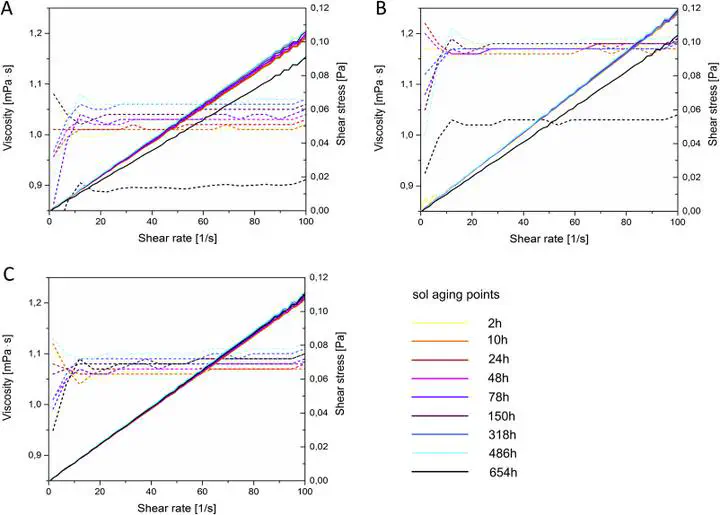 Viscosity curves (dotted lines) and flow curves (solid lines) for sol 1 – A, sol 2 – B, sol 3 – C in particular aging points.
Viscosity curves (dotted lines) and flow curves (solid lines) for sol 1 – A, sol 2 – B, sol 3 – C in particular aging points.Abstract
The detailed information about the growth of organically modified silica networks regarded as useful for barrier coatings and membrane coatings preparation are the subject of this paper. The networks obtained using different precursors containing non-hydrolysable organic groups: dimethyldiethoxysilane – dMdEOS, ethyltriethoxysilane – EtEOS, n-propyltriethoxysilane – nPtEOS have been investigated with rheology and Raman spectroscopy of solutions. The polycondensation degree during aging has been calculated. Individual networks have been monitored for selected points during 654 h of aging. Thanks to the completion of rheology and Raman spectroscopy investigations different influence of aging and physicochemical interaction occurring in particular sols and influencing their rheological behavior have been revealed. The observed differences also apply to the type of structures created by hydrolysis and condensation reaction and are connected with organic group functionalizing silica network.